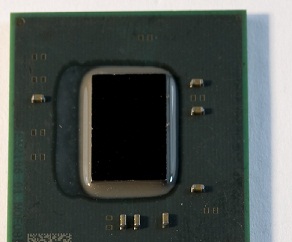 Intel has announced the next generation Atom netbook processor, claiming it has a longer battery life, improved system performance and would therefore be perfect for low cost netbooks.
Intel has announced the next generation Atom netbook processor, claiming it has a longer battery life, improved system performance and would therefore be perfect for low cost netbooks.
The Intel Atom processor, Intel’s smallest processor, built with the world’s smallest transistors and manufactured on Intel’s industry-leading 45nm Hi-k Metal Gate technology. The Intel Atom processor was purpose-built for simple, affordable, netbooks and nettops.
Intel Atom processor-based netbooks and nettops offer both an easy-to-use mobile device with simple interfaces and targeted performance for a good online experience. They are rugged and compact in design, and offer the freedom and flexibility of wireless connectivity.
The Atom N450 requires 5.5 watts of power, as per the company press release. The Atom N450 could lead to innovation in netbooks and tablets – paving the way to thinner models with less power requirement. It has a speed of 1.66 GHz – the same as a N289 netbook chip. It also integrates graphics and a memory controller so as to make the processing of multimedia faster. This would also make the Atom N450 capable of 720 pixel high definition graphics. The chip has 512kb cache, supports 667MHz DDR2 Memory and uses Intel GMA 3150 integrated graphics for providing rich Internet browsing and entertainment experience. Netbooks powered by Atom N450 will run on Windows 7, Windows XP or Linux operating systems.
[advt]
- Higher level of integration plus 45nm manufacturing enables significant power reduction, performance improvements and smaller package size
- Average power consumption down 20 percent over previous generation, enabling longer battery life in netbooks
- Over 80 netbook design wins from major OEMs including ASUS, Acer, Dell, Toshiba, Fujitsu, Lenovo, Samsung and MSI
- Next-generation Intel Atom systems available Jan. 4
The other two Atom processors launched are the Atom single core D410 and the Atom dual core D510. These have speeds of 1.66GHz and include 512KB and 1MB of cache respectively. The D410 draws around 10 watts of power, while the D510 draws 13 watts.
“The Intel Atom processor has fueled an entirely new category of computing over the last year and a half and we think the growth will continue for devices like netbooks and entry-level PCs built around basic computing and Internet usage models,” said Mooly Eden, Intel corporate vice president and general manager of Intel’s PC Client Group. “We’re excited to be delivering the next-generation Atom platform and working across the industry as we head into a second phase of growth, powering innovative new system designs with better performance, smaller footprints and better battery life.”
One of the most significant features of the new platform is the integration of memory controller and graphics into the CPU, a first in the industry on x-86 chips. That means two chips (CPU+chipset) instead of the previous three (CPU, chipset, I/O controller hub), a lower TDP, and substantial reductions in cost, overall footprint and power. The netbook platform features a 20 percent improvement in average power and a smaller package size over the previous Atom platform. This translates into smaller and more compact system designs and longer battery life. Because of the integration, the total footprint for the netbook platform has decreased by approximately 60 percent. For entry level desktop PCs, it’s a nearly 70 percent reduction in footprint and about 50 percent lower TDP than the previous generation.
The N450 is a single core Atom processor with 512k of L2 cache and a 7 watt total kit TDP including chipset. The D410 for entry-level desktop PCs is a single-core Atom processor with 512k of L2 cache and a 12-watt total kit TDP including chipset, and the D510 for entry-level desktop PCs is a dual core Atom processor with 1meg L2 cache and a 15-watt total kit TDP including chipset. The new chips all run at 1.66GHz. Pricing and availability will be announced in January as systems become available from OEMs. [source]


Be the first to comment